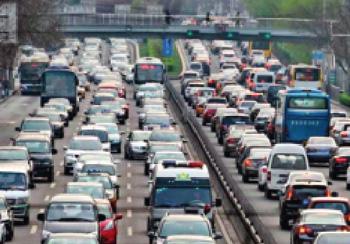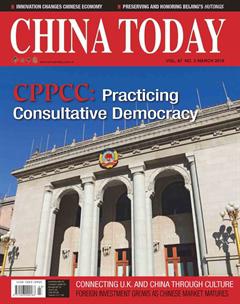More Automobiles in China

The number of automobiles in China hit 310 million at the end of 2017 after a record 33.52 million new vehicles registered last year. Among them, 217 million were cars, including 23.04 million registered in 2017, which represents an 11.85 percent year-on-year increase.
Nationwide, 53 cities have seen their cars exceeding the one million mark, with seven cities accommodating more than three million, including Beijing, Shanghai, and Shenzhen.
New-energy cars account for 0.7 percent of all cars in China, totaling 1.53 million. Last year alone reported an addition of 650,000, up 24.02 percent from 2016. So far, 107 Chinese cities designate a special license plate for new-energy cars, which will be implemented nationwide during the first half of 2018.
More “Second Child” Born
Data from the National Bureau of Statistics shows that 17.23 million children were born in China in 2017. The number is smaller than that of 2016, but is the second largest since 2000.
China relaxed its “one child” policy in 2015 to allow every family to have two children. New births spiked to 17.86 million the next year, and dipped slightly to 17.23 million last year, exceeding the average for the 2011-2015 period by 1.42 million and 790,000 respectively.
The decline in 2017 compared with 2016 is due to fewer births of the first child. Births of the second child was, however, on the rise, totaling 8.83 million and outstripping the 2016 number by 1.62 million. This represents 51.2 percent of all new births last year.
Stronger Protection of Oceans
This year, China will implement the tightest control on land reclamation in its history, suspending reclamation projects for the purposes of construction or aquatic farming, including those already approved. Protection of the sea and coastline will be stepped up, an aggregate discharge control system will be introduced in certain waters such as the Bohai Sea, and more efforts will be made to preserve and rehabilitate the marine environment. New maritime reserves will be established, and inspections will be carried out in these areas.
China will also launch a system of ecological and environmental damage compensation, with clearly defined compensation methods and standards. Meanwhile, a slew of sea-related decrees are in the works, including one on the transfer of maritime area utilization rights, one on the maritime eco-system red line, one on the preservation of coastal wetlands, and a national action plan for plastic marine debris.

Satellite Named after Late Premier Launched
Chinas first nano-satellite, with primary and middle school students involved in the development and building process, was launched into space on January 19. Zhang Xiang, chief designer of the satellite, said that the nanosatellite, named after late Premier Zhou Enlai, weighing two kg, was set to run in sunsynchronous orbit. Equipped with an HD optical camera, it can capture images of space with the highest resolution among those shot by other Chinese satellites for scientific education purposes.
Zhang said the students had used their spare time to join the development and groundbased simulation performance of the satellite, and had learnt to assemble and practice voice data transfer and telecommunication applications.
The satellite project was approved in 2016. The administration office of Huaian Youth Comprehensive Development Base is the main organizer of the project.

